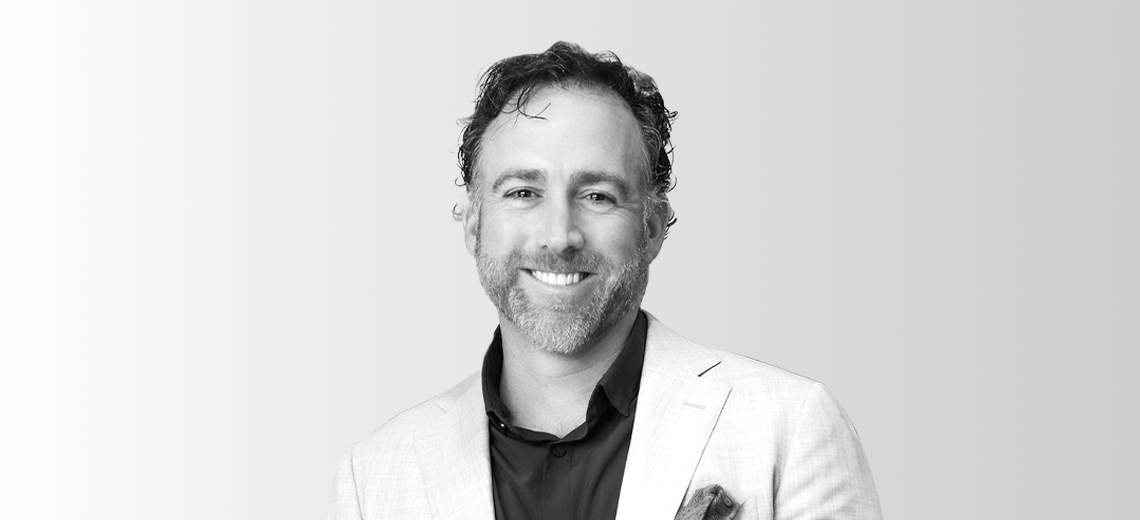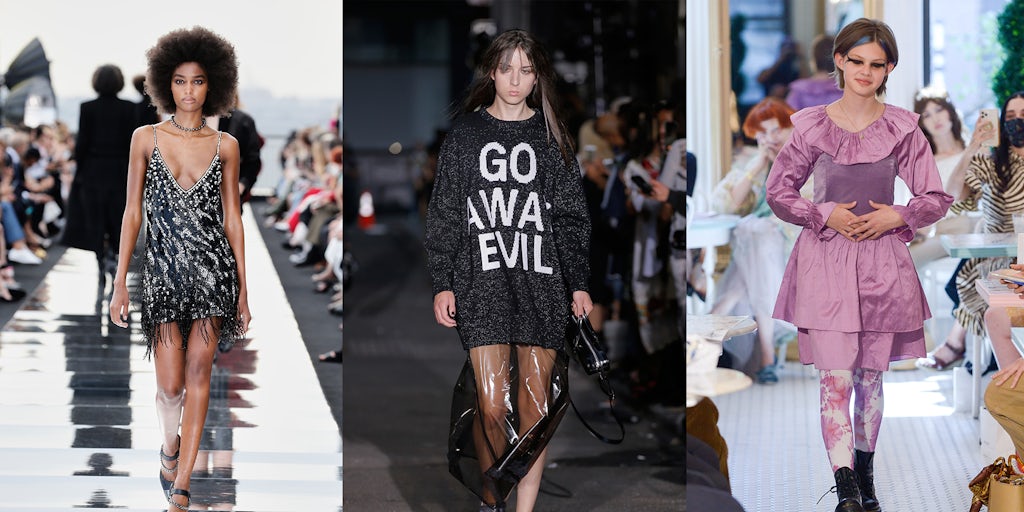Kendra Scott CEO Tom Nolan: ‘We’ve been bullish on retail, even through Covid’
In 2021, Kendra Scott passed on the CEO title she’d held for her 20-year-old namesake jewelry company to Tom Nolan, a Ralph Lauren and Condé Nast veteran who’d joined Kendra Scott in 2015 as a member of the board of directors.
Between 2015-2021, Kendra Scott became “a very big business valued at more than $1 billion,” Nolan said on the latest episode of the Glossy Podcast.
And the brand is still in growth mode.
Kendra Scott recently entered the luxury jewelry market, plus it’s actively rolling out new stores. By the end of July, it will have 134 Kendra Scott stores across 35 U.S. states. “We’ve been aggressively pursuing retail and we’ve been really bullish on retail, even through Covid,” Nolan said.
The stores, which drive 50% of sales, double as event spaces; last year, 128 Kendra Scott stores hosted 20,000 total events. The Northeast is the brand’s fastest-growing U.S. market, and it’s currently expanding internationally through wholesale partners.
On the podcast, Nolan discusses Kendra Scott’s philanthropy-fueled success and his own career path which unexpectedly yet perfectly landed him in his current role. The conversation’s highlights, below, have been lightly edited for clarity.
The draw to an Austin-based jewelry company
“I immediately fell in love with the business. And just as quickly, I fell in love with the people — primarily Kendra and the mission she built 21 years ago of doing good in the world and putting a goalpost down in the ground of really helping people and philanthropy. … When I joined the company as a member of the board of directors, it was still a relatively small business. And a couple short years later, it became a very big business valued at more than a billion dollars. And at that point, Kendra asked me to join the company full time. And in full disclosure, I wasn’t really interested in moving my family to Texas; I was living on the East Coast, I’m from New York originally, and Texas may as well have been Jupiter, as far as I was concerned. … But before I made up my mind about whether to join the company full time or not, Kendra asked me to go to a Kendra Cares event that the company was doing in New York. Kendra Cares is a philanthropic arm of basically taking our Color Bar, which allows you to create your own product in any of our stores, and we bring it to hospitals and businesses and schools and anywhere we can to help. And this one that I went to, which was the first time I’d gone to one, was at Sloan Kettering’s pediatric oncology ward. … I was not looking forward to going because I’m a pretty emotional person, … and I didn’t want to go and embarrass the families and myself, truthfully. So I begrudgingly went. … And when the elevator doors opened, I couldn’t believe what was in front of me. It was like the happiest place in the world. There were clowns and balloons, and we had a DJ, and I made Color Bar product for sick kids and their parents and siblings and grandparents and family relatives. I held it together for the three hours. … And then I went across the street and lost it, called my family and just said, ‘Hey, look. We’ve got to move to Austin. I’m never going to be able to have an impact and touch people, on a one-on-one basis, like I did today and also conduct business. And — outside of Kendra being an amazing human being, the team that we had here being amazing and just having a spectacular business — it was really [about realizing] the good that we could do in the world and the impact that I could have, hopefully, in a small way.”
The road to ‘servant leader’
“I’m not afraid to ever admit mistakes, and I’ve made a lot of them over the years. And I think you learn the most through your mistakes, first and foremost. … At the places where I’ve had management roles, I’ve kind of entered those businesses without knowing anything about the businesses. I went into the publishing industry first, and I didn’t know anything about it. So I was always really curious. I’d ask a lot of questions and find people smarter than me and not be afraid to say I didn’t know the answer. And then from there, I went to the apparel industry, and, outside of wearing clothes and buying them, I knew nothing about the apparel industry. And it was the same thing: I had great mentors and resources that I could lean into, and I would ask questions. I wasn’t afraid to show vulnerability, and I think, to some extent, that’s endearing when somebody’s unafraid to be authentic and humble. And then, when I went from the apparel industry to the jewelry and accessories business, I knew nothing about it. And I also walked into a world where the business was 99%, female, which is not something I was accustomed to. And I had to be really vulnerable. And I think that learning lessons along the way — and knowing that it’s OK to ask questions, that it’s OK to fail, that it’s OK to show your heart — allowed me to be successful at this organization. I also think that you are your circumstances — and I worked for some people over the years where I didn’t like the way they made me feel. And I always said that if I ever worked in a position where I was fortunate enough to have the great privilege to be a leader, I wanted to make people feel heard and seen and involved in the process. And I always wanted to be a servant leader; I wanted to be the kind of person who asks for somebody’s opinion, in the same way that the great leaders I worked for asked of me. And I think having that listener’s or learner’s heart was really helpful. And hopefully, if I’m doing a good job, it’s been at least partially because of that.”
On entering the luxury category
“Historically, what they’d say is that you can always go down the ladder, but it’s hard to go up the ladder. And we’ve proven that that’s not entirely true. Anytime we launch something that is a stretch, to some extent — where the price points are elevated — we always start with our core customers, because they’re familiar with the brand, they know what we stand for, they know the quality quantification of our products, etc. And what we saw — when we launched demi-fine jewelry and fine jewelry, and watches, and engagement jewelry — was that a large percentage of the immediate customers were [existing customers]. And we’re targeting those people very specifically. That’s always the first step. But also, our value proposition is the same, whether we sell an engagement ring, a pair of diamond earrings, an engravable demi-fine piece or a piece of fashion jewelry. We want people to feel like they’re getting a lot for their money. And it serves us really well through bumpy economies. What we saw in the fourth quarter last year was that people who, when the economy was great, stretched into higher-end brands were becoming uncomfortable spending at very high price points. So they were trading down into just-as-quality product, but at a much lower price point. And Kendra Scott does that really successfully. So we’re attracting new customers.”


:quality(70)/cloudfront-eu-central-1.images.arcpublishing.com/businessoffashion/A7TUXEYBJ5HUBBGUOLUQJ7VG5M.jpg)


